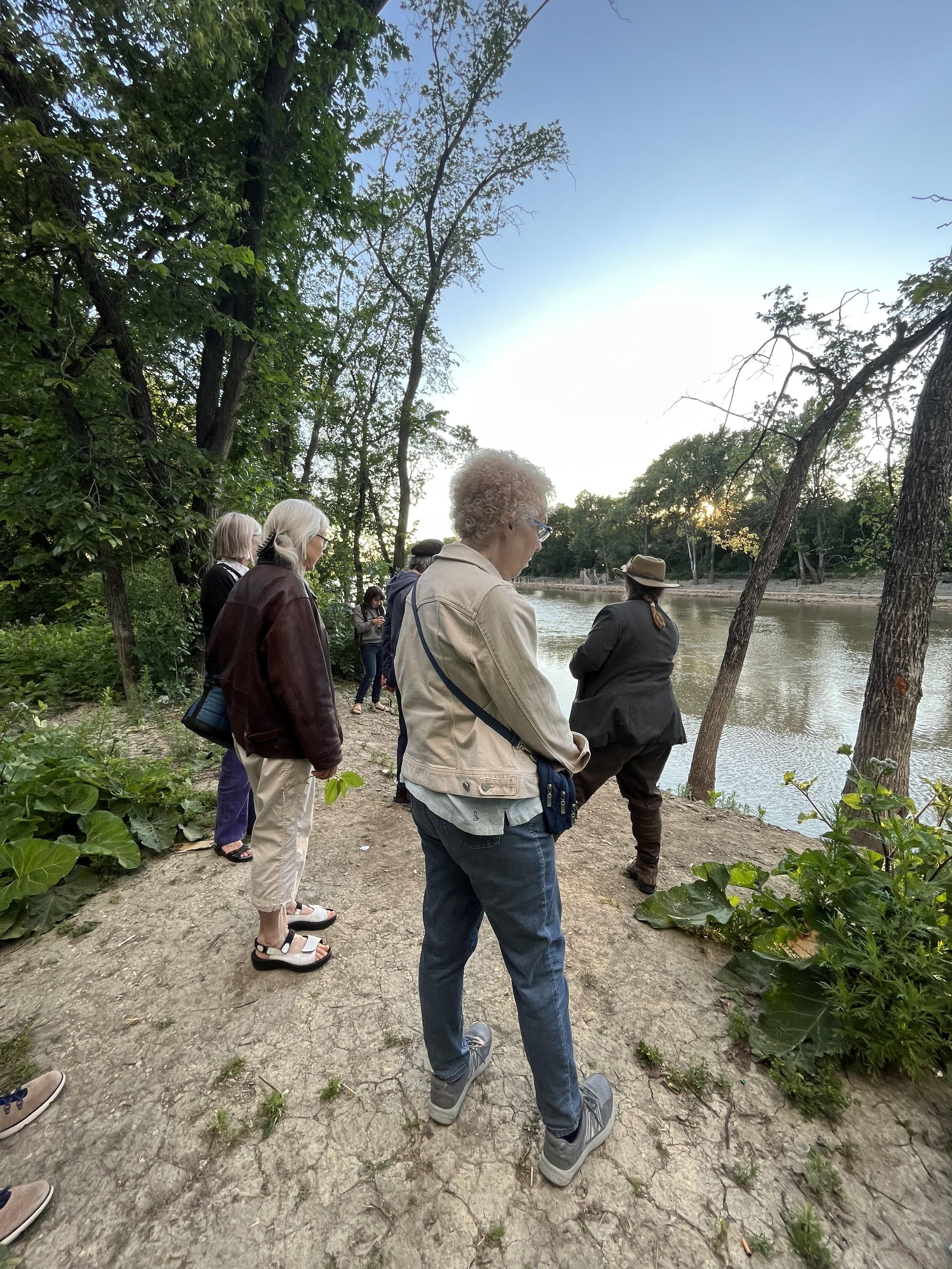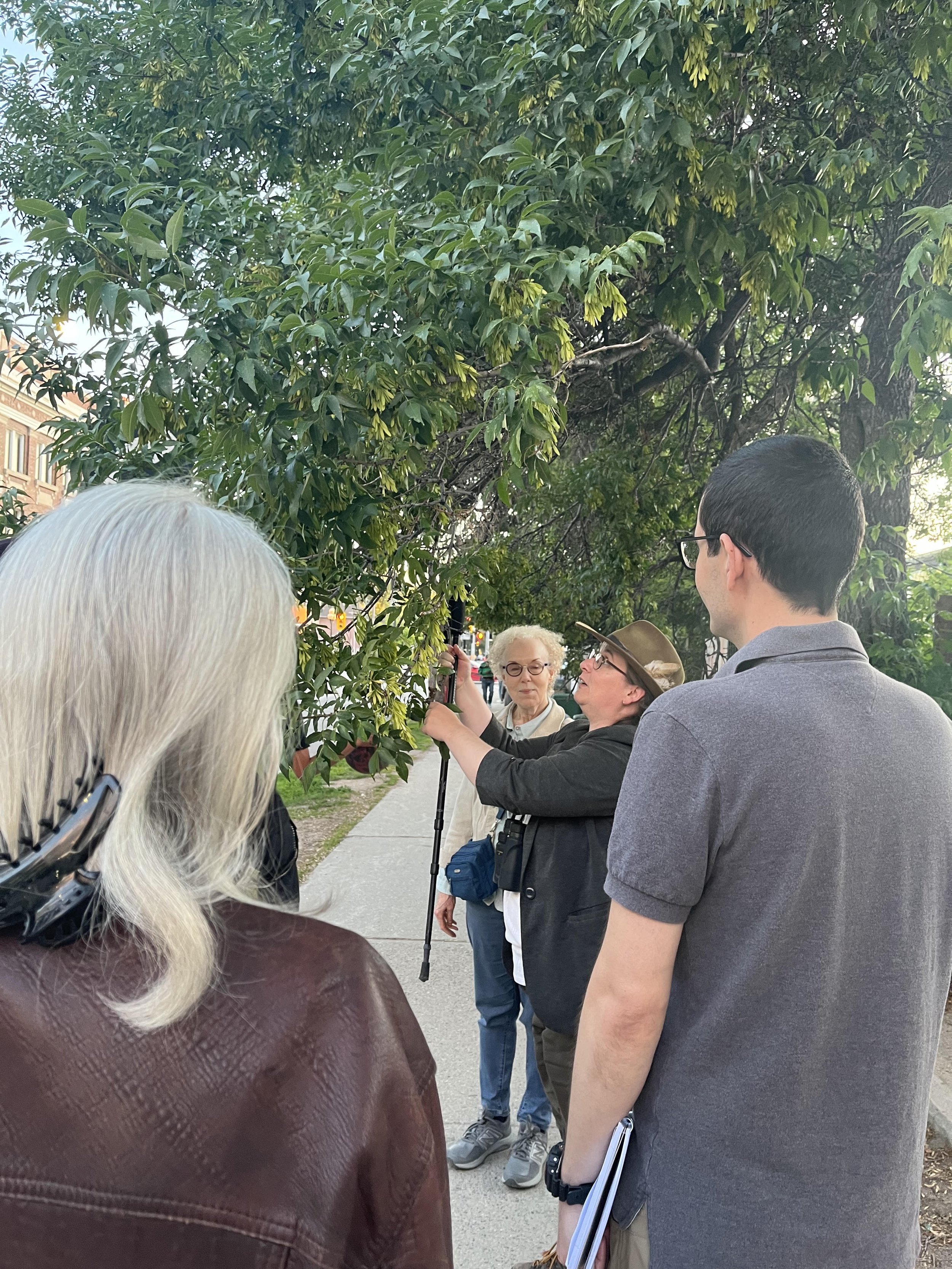What are trees stressed about?
Dr. Heather Hinam, founder and CEO of environmental planning and design company Second Nature, explored tree conservation in a free tour put together by Osborne Village BIZ.
Fun fact: trees get stressed, too.
After two weeks of weather-induced postponement, Dr. Heather Hinam, naturalist and artist, led a small group on a tour of Osborne Village’s tree, bird and plant biodiversity, put together by Osborne Village BIZ.
The tour, which began at Holy Rosary Roman Catholic Church (510 River Ave.) and went as far as the bank of the Assiniboine River, aimed to spread knowledge and awareness of the diversity in the aged neighbourhood and, ultimately, to push for better protection of Winnipeg’s tree canopy.
“It’s really important that we maintain the mature trees and other plants in our community,” Hinam said. “Osborne Village is a mature community that has a mature canopy, those are very important to preserve.”
Approximately 14 per cent of Winnipeg’s three-million-tree canopy is made up of ash trees, she said, adding that the can be identified by their thin leaves. Currently, the entire population of ash is threatened by the invasive emerald ash borer (EAB), a type of beetle that infests the bark of the plant and leaves signature white trails of death implanted in the wood.
Southwestern Ontario has lost millions of ash trees since the insect was originally introduced to North America in 2002, according to Ontario’s Invasive Species Awareness program.
In turn, the City of Winnipeg has projected that it will lose its entire ash tree population over a 10-year-period, resulting in a loss of $437 million worth of park trees in the city.
“We’ll have to wait and see,” Hinam said. “That’s why (the city is) not planting any new (ash) … When we started losing elms, we replaced them with ash, (because) they’re not prone to any diseases, and they weren’t at the time, and now we’re in trouble with ash.”
Unfortunately, it’s almost impossible to get rid of the emerald ash borer entirely. Pesticide can preserve a tree for as long as possible, but wears off eventually. With no natural predators, the emerald ash borers remain.
“I’m looking across the river at the trees going, ‘How many of those are we gonna lose and how long is it gonna take?’ It’s hard for me to look at it and go, ‘This is gonna happen’ and not be able to do anything about it,” Hinam said.
Although the situation seems hopeless, there are a couple things people can do to help. One major way to play a part, which residents often overlook, is watering the trees in your neighbourhood as often as you can.
As mentioned, trees get stressed, Hinam said, especially in hot, dry summers. A flash of the garden hose is often crucial in keeping them strong and healthy — and thus not as susceptible to infestations.
“This year has been pretty wet. But in the years past, we’ve had pretty dry summers. Our boulevard trees are quite stressed because they’re not getting enough water,” Hinam said. “So if you have boulevard trees that you have access to, giving them regular water can go a long way to helping them. They need it to be healthy … It’s not a cure, but it certainly helps.”
Even more, Winnipeggers are encouraged to keep up with regular trimming and maintenance, as and to reach out to local city councillors, MLAs and MPs and hold them accountable for keeping up with proper environmental care.
Not only do trees provide resources, oxygen, animal diversity and mental wellness, they help keep roads from flooding and regulate heat for city infrastructure.
In times of climate change and environmental threats, it’s time to treat the trees with the mutual respect that they deserve, Hinam said.
“They’re more than just a pretty face.”



